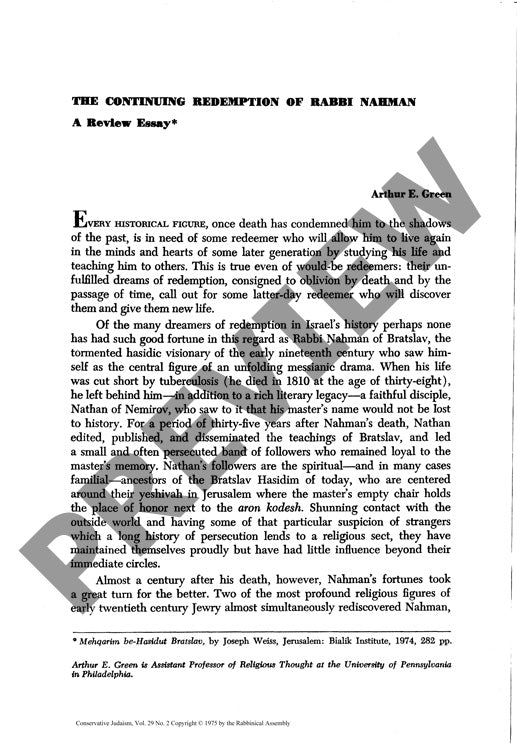The Continuing Redemption of Rabbi Nahma
Couldn't load pickup availability
Rabbi Nahman of Bratslav's theological legacy has undergone successive waves of interpretation since his death in 1810, each revealing new dimensions of this complex Hasidic visionary. Joseph Weiss's posthumously published studies, *Mehqarim be-Hasidut Bratslav* (1974), mark a watershed moment in understanding Nahman's paradoxical worldview. Through meticulous analysis of Nahman's teachings, Weiss uncovered a religious thinker grappling with profound internal conflicts—a figure who saw himself simultaneously as the greatest of tzaddikim and the worst of sinners. Weiss's methodological approach, centered on paradox and irony as interpretive keys, illuminates Nahman as an early existentialist who confronted divine absence and developed a radical theology where authentic faith emerges precisely through apparent divine abandonment. Particularly significant is Weiss's recognition that Nahman's parables and sermons function as masked autobiographical confessions. While scholarly debate continues regarding potential Sabbatian influences, Weiss's masterful research demonstrates how rigorous historical analysis can breathe new life into our understanding of religious figures, extending a chain of interpretation that began with Nahman's disciple Nathan of Nemirov and continued through Martin Buber and Hillel Zeitlin in the early twentieth century.

More Information
-
Physical Description
-
Publication Information
Published 1975
ISBN
-
Publication Credits
Arthur Green

